Program Accomplishments
LDRD-funded research explores the frontiers of science and technology in emerging mission spaces, with projects guided by an extremely creative, talented team of scientists and engineers.
Featured Research
LDRD funded 263 projects in fiscal year 2021. Brief summaries of each project are included in the Project Highlights section of our online report at ldrd-annual.llnl.gov. Here, we provide a closer look at a handful of projects that underscore the exciting, innovative research in this year’s LDRD portfolio.
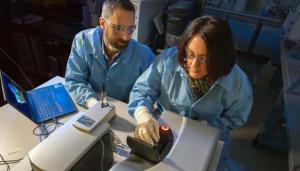
ConserV Bioscience Limited (CBL) and LLNL have agreed to collaborate on the development of a broad-spectrum or “universal” coronavirus vaccine.
This collaboration brings together CBL’s expertise in identifying antigens and LLNL’s nanolipoprotein delivery system. The vaccine has been designed to provide broad-spectrum protection against coronavirus pathogens of human and animal origin, including but not limited to MERS, SARS, and SARS-CoV-2 (the virus that causes COVID-19).
The vaccine construct consists of conserved immunoreactive regions from external and internal coronavirus proteins, from each virus genus, encoded in messenger RNA (mRNA). The mRNA construct will be formulated with LLNL’s propriety nanolipoprotein particle vehicle (NLP) prior to injection, allowing freeze drying of both components separately to avoid cold chain storage and transport issues.
Coronaviruses are a group of single-stranded RNA viruses that, in humans, cause respiratory tract infections and other mild to lethal effects. In December 2019, a novel strain of coronavirus, SARS-CoV-2, was identified in Wuhan, China. To date, globally, more than 352 million people have been infected by the novel virus and more than 5.6 million people have died from the infection.
The related LDRD project focuses on nucleic acid-based therapeutics with specially encoded proteins that promote the production of vaccine antigens. The versatile nanoplatform would drastically reduce the time from concept to administration of the therapeutic, providing a powerful defense against biological threats and disease. “We are pleased to be working with the Biosciences and Biotechnology Division at LLNL to develop our broad-spectrum coronavirus vaccine candidate,” said Kimbell Duncan, CEO of ConserV Bioscience. “We have identified regions within the proteins of the virus that are not susceptible to change and if effective, the vaccine promises to protect against a broad spectrum of current circulating coronavirus strains and future emergent ones.”
Added LLNL biologist Amy Rasley: “We look forward to combining our nanolipoprotein particle technology with ConserV’s mRNA construct encoding conserved viral epitopes. We hope to advance the vaccine candidate to human trials as quickly as possible.” Rasley’s fellow principal investigator on the project, Nicholas Fischer, noted: “Our NLP technology is very versatile, so we anticipate that we can tune our platform formulation to produce safe and effective vaccine candidates.”
LDRD Project Title: Delivering Ribonucleic Acid Vaccines Using Nanoparticles
Principal Investigator:
Nicholas Fischer
LDRD Project:
20-ERD-004
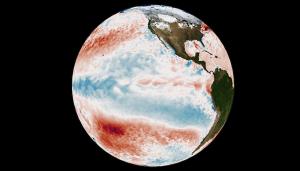
New research shows that naturally occurring climate variations help to explain a long-standing difference between climate models and satellite observations of global warming.
Satellite measurements of global-scale changes in atmospheric temperature began in late 1978 and continue to the present. Relative to most model simulations, satellite data has consistently shown less warming of Earth’s lower atmosphere. This has led some researchers to conclude that climate models are too sensitive to greenhouse gas emissions, and thus are not useful for making future climate change projections.
Instead, the model-versus-satellite difference is largely driven by natural variations in the Earth’s climate. “Natural climate variability has likely reduced the observed warming during the satellite-era” said Stephen Po-Chedley, the project’s principal investigator and lead author of a related paper appearing in the Proceedings of the National Academy of Sciences.
The main driver of natural year-to-year variations in global climate is the El Niño-Southern Oscillation (ENSO). Many climate models produce ENSO variations, but the timing of these events is not specified in model simulations. “While models are intended to represent the average climate, its changes and realistic natural variations, they can only simulate the exact timing of natural climate events by chance,” said Po-Chedley.
Some decades favor El Niño or La Niña events, and clustering can create decadal oscillations that influence the rate of atmospheric warming. Simulations with coupled models of the atmospheric and ocean circulation produce such decadal oscillations, but their phasing will not necessarily match the real world during the satellite era.
The researchers analyzed hundreds of simulations from the newest generation of global climate models. They found that natural climate variability is a key component of the differences between modeled and observed warming rates. Roughly 13 percent of the 400-plus simulations showed warming of the tropical troposphere within the range of satellite results. The model simulations that agree with the satellite record tend to exhibit a La Niña-like temperature change pattern, just like the observations.
Such agreement yields two important findings. First, despite claims to the contrary, current climate models can simulate warming of the tropical troposphere that is consistent with observations. Second, natural variability has likely reduced tropospheric warming over the satellite era, both in the real world and in simulations consistent with satellite warming rates.
Another significant finding of the study relates to the suggestion that differences between modeled and observed warming rates are due to errors in “climate sensitivity”—the size of the warming in response to increases in greenhouse gases. “Models with both high and low sensitivity to greenhouse gas increases can produce simulations consistent with the warming estimated from satellites,” Po-Chedley said. “In reconciling modeled and observed warming rates, it’s pretty clear from our work that climate sensitivity is not the sole determinant of atmospheric warming. Natural variability is an important piece in the puzzle.”
LDRD Project Title: Advancing Measurements and Understanding of the Rate and Structure of Atmospheric Warming
Principal Investigator:
Stephen Po-Chedley
LDRD Project:
18-ERD-054
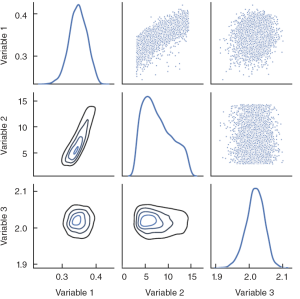
The best way to understand how a material behaves under certain conditions is to test it. For example, an engineering project may rely on understanding a material’s strength—its resistance to permanent deformation—across a range of temperatures and strain rates. Gathering all relevant experimental data could be challenging or even impossible due to the time and cost required, material availability, or the difficulty of recreating certain conditions in a laboratory setting. Researchers, therefore, rely on models informed by available data to predict the performance of materials at untested conditions.
LLNL has a vested interest in understanding the accuracy of these models and the data that feed them. Material property models play a foundational role in a range of Livermore’s science and engineering research endeavors including stockpile stewardship, the National Nuclear Security Administration’s program to ensure the safety and reliability of the nation’s nuclear stockpile.
Materials modeler Nathan Barton explains, “As we shift manufacturing and design approaches to more modern methods, we need to quantify uncertainty to maintain confidence in our nuclear stockpile and our stockpile modernization activities. Understanding the uncertainties gives us increased confidence in the experimental results and the models informed by the experimental data.”
Led by materials scientist Jeff Florando and supported by the LDRD program, Barton and other Laboratory statisticians, computational modelers, and materials scientists have been developing a statistical framework for researchers to better assess the relationship between model uncertainties and experimental data. In an earlier effort, Florando helped build the Material Implementation, Database, and Analysis Source (MIDAS), a central repository for material strength-related data and models. “My role in developing MIDAS helped me realize we needed to do a better job understanding uncertainties in material strength research,” says Florando. “MIDAS helps us create material strength model parameterizations, but the simulations are deterministic—they give us an answer that is based on the parameters we put in them.”
The latest framework, based on Bayesian methodology, allows for uncertainties to be updated as new and different types of strength data become available and can be used to determine the future experiment with the greatest potential to reduce uncertainty. Methods developed by the team have informed experimental planning efforts within the Laboratory’s Weapons and Complex Integration (WCI) organization as well as research ventures exploring how materials evolve and degrade.
LDRD Project Title: Understanding Material Strength Variabilities and Uncertainties for Component Qualification
Principal Investigator:
Jeff Florando
LDRD Project:
17-ERD-029

While there has been a surge in using machine learning to build data-driven emulators, the field has lacked an effective method for determining how closely the predictive models reflect physical reality. LLNL computer scientists have developed a new deep learning approach to designing emulators for scientific processes that is more accurate and efficient than existing methods.
In a paper published by Nature Communications, an LDRD research team describes a “Learn-by-Calibrating” (LbC) method for creating powerful scientific emulators that could be used as proxies for far more computationally intensive simulators. While it has become common to use deep neural networks to model scientific data, an often overlooked, yet important, problem is choosing the appropriate loss function—measuring the discrepancy between true simulations and a model’s predictions—to produce the best emulator, researchers said.
The LbC approach is based on interval calibration, which has been used traditionally for evaluating uncertainty estimators, as a training objective to build deep neural networks. Through this novel learning strategy, LbC can effectively recover the inherent noise in data without the need for users to pick a loss function, according to the team.
Applying the LbC technique to various science and engineering benchmark problems, the researchers found the approach results in high-quality predictive models that are closer to real-world data and better calibrated than previous state-of-the-art methods. By demonstrating the technique on scenarios with varying data types and dimensionality, including a reservoir modeling simulation code and inertial confinement fusion (ICF) experiments, the team showed it could be broadly applicable to a range of scientific workflows and integrated with existing tools to simplify subsequent analysis.
“This is an extremely easy-to-use principle that can be added as the loss function for any neural network that we currently use, and make the emulators significantly more accurate,” said lead author Jay Thiagarajan. “We considered different types of scientific data—each of these data have completely different assumptions, but LbC could automatically adapt to those use cases. We are using the same exact algorithm to approximate the underlying scientific process in all these problems, and it consistently produces much better results.”
LDRD Project Title: Knowledge-Driven Machine Learning
Principal Investigator:
Jayaraman Thiagarajan
LDRD Project:
21-ERD-012
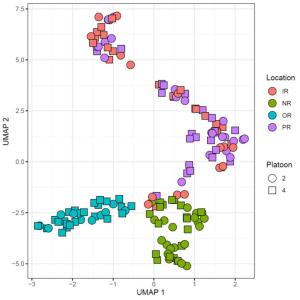
The human body serves as host to trillions of microorganisms, collectively known as the microbiome. In particular, the gastrointestinal tract contains a diverse and active microbial ecosystem, also known as a microbiota. The composition and activity of gut microbes are modulated by changes in host diet and physiology while, in turn, gut microbes support the immune system, regulate the central nervous system, and provide nutrients. This relationship is largely beneficial but remains delicate. The microbiome can easily be altered by environmental stressors, leading to a higher risk of systemic inflammation, increased susceptibility to illness, higher rates of infection, and the recurrence of chronic disease.
Military training places uniquely high demands on the physical and psychological health of soldiers. Individuals in training are at increased risk for infectious diseases that can interrupt training cycles and compromise operational readiness. When examining metrics of trainee health and performance, the host microbiome could offer vast amounts of information.
An LDRD-funded project used whole metagenome sequencing to examine the human microbiome in a closed cohort of U.S. Army Infantry trainees over the duration of a training cycle. In a longitudinal fashion and across multiple body sites, a feasibility study successfully demonstrated detection and statistical analysis of microbiome profiles in a unique and challenging sample set. These results lay critical groundwork toward more expansive tracking of microbial factors that could be employed for supporting the health, readiness, and performance of future warfighters. The data from this feasibility study could have implications toward optimizing microbiome interventions such as pre/probiotic manipulation.
LDRD Project Title: Boot Camp Bugs: Microbiomes of U.S. Infantry Trainees
Principal Investigator:
Nicholas Be
LDRD Project:
20-FS-029

Nearly 40 years ago, scientists first predicted the existence of helium rain inside planets composed primarily of hydrogen and helium, such as Jupiter and Saturn. However, achieving the experimental conditions necessary to validate this hypothesis hasn’t been possible—until now.
In a paper published by Nature, scientists reveal experimental evidence to support this long-standing prediction, showing that helium rain is possible over a range of pressure and temperature conditions that mirror those expected to occur inside these planets.
“We discovered that helium rain is real, and can occur both in Jupiter and Saturn,” said Marius Millot, an LLNL physicist and LDRD principal investigator. “This is important to help planetary scientists decipher how these planets formed and evolved, which is critical to understanding how the solar system formed.
“Coupling static compression and laser-driven shocks is key to allow us to reach the conditions comparable to the interior of Jupiter and Saturn, but it is very challenging,” Millot said. “We really had to work on the technique to obtain convincing evidence. It took many years and lots of creativity from the team.”
The team used diamond anvil cells to compress a mixture of hydrogen and helium to 4 gigapascals, (GPa; approximately 40,000 times Earth’s atmosphere). Then, the scientists used 12 giant beams of LLE’s Omega Laser to launch strong shock waves to further compress the sample to final pressures of 60–180 GPa and heat it to several thousand degrees.
Using a series of ultrafast diagnostic tools, the team measured the shock velocity, the optical reflectivity of the shock-compressed sample, and its thermal emission, finding that the reflectivity of the sample did not increase smoothly with increasing shock pressure, as in most samples the researchers studied with similar measurements. Instead, they found discontinuities in the observed reflectivity signal, which indicate that the electrical conductivity of the sample was changing abruptly, a signature of the helium and hydrogen mixture separating.
“Our experiments reveal experimental evidence for a long-standing prediction: There is a range of pressures and temperatures at which this mixture becomes unstable and demixes,” Millot said. “This transition occurs at pressure and temperature conditions close to that needed to transform hydrogen into a metallic fluid, and the intuitive picture is that the hydrogen metallization triggers the demixing.”
Looking ahead, the team will continue to refine the measurement and extend it to other compositions in the continued pursuit of improving our understanding of materials at extreme conditions.
LDRD Project Title: Unraveling the Physics and Chemistry of Water-Rich Mixtures at Extreme Pressures and Temperatures
Principal Investigator:
Marius Millot
LDRD Project:
19-ERD-031
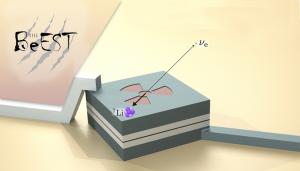
“Sterile neutrinos” are theoretically predicted new particles that offer an intriguing possibility in the quest for understanding the dark matter in our universe. Unlike the known “active” neutrinos in the Standard Model (SM) of particle physics, these sterile neutrinos do not interact with normal matter as they move through space, making them very difficult to detect.
A team of interdisciplinary researchers, led by LLNL and the Colorado School of Mines, has demonstrated the power of using nuclear decay in high-rate quantum sensors in the search for sterile neutrinos. The findings are the first measurements of their kind.
The research has been featured recently as a DOE Office of Science Highlight and will jump-start an extended project to look for one of the most promising candidates for dark matter, the strange unidentified material that permeates the universe and accounts for 85 percent of its total mass.
The experiment involves implanting radioactive beryllium-7 atoms into superconducting sensors developed at LLNL and has been nicknamed the “BeEST” for “Beryllium Electron-capture with Superconducting Tunnel junctions.” When the beryllium-7 decays by electron capture into lithium-7 and a neutrino, the neutrino escapes from the sensor, but the recoil energy of the lithium-7 provides a measure of the neutrino mass. If a heavy sterile neutrino with mass mc2 were to be generated in a fraction of the decays, the lithium-7 recoil energy would be reduced and produce a measurable signal, even though the elusive neutrino itself is not detected directly.
With a measurement time of just 28 days using a single sensor, the data exclude the existence of sterile neutrinos in the mass range of 100 to 850 kiloelectronvolts down to a 0.01 percent level of mixing with the active neutrinos—better than all previous decay experiments in this range. In addition, simulations on LLNL supercomputers have helped the team understand some of the materials effects in the detector that need to be accounted for to gain confidence in potential sterile neutrino detection events.
“This research effort lays the groundwork for even more powerful searches for these new particles using large arrays of sensors with new superconducting materials,” said LLNL scientist Stephan Friedrich. “Sterile neutrinos are exciting because they are strong candidates for so-called ‘warm’ dark matter, and they also may help to address the origin of the matter–antimatter asymmetry of the universe,” Friedrich said.
LDRD Project Title: A Search for Sterile Neutrino Dark Matter
Principal Investigator:
Stephan Friedrich
LDRD Project:
20-LW-006
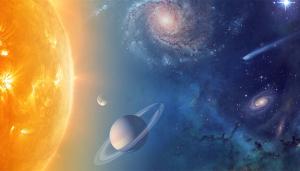
As the solar system was developing, the giant planets (Jupiter and Saturn) formed very early, and as they grew, they migrated both closer to and further away from the sun to stay in gravitationally stable orbits.
The gravitational effect of these massive objects caused immense reshuffling of other planetary bodies that were forming at the time, meaning that the current locations of many planetary bodies in our solar system are not where they originally formed.
An LLNL team set out to reconstruct these original formation locations by studying the isotopic compositions of different groups of meteorites that all derived from the asteroid belt (between Mars and Jupiter). The asteroid belt is the source of almost all of Earth’s meteorites, but the material that makes up the asteroid belt formed from sweeping of materials all over the solar system.
“If we want to know what the solar system looked like at inception, we need a tool to reconstruct this primordial structure,” said LLNL cosmochemist and LDRD principal investigator Greg Brennecka. “We’ve found a way to use isotopic signatures in meteorites to reconstruct what the solar system looked like when it was formed.” Even though the asteroid belt is only a relatively narrow band of the solar system, it contains an impressively diverse collection of materials. For example, multiple spectroscopically distinct asteroid families have been identified within the main belt, indicating vastly different chemical compositions. In addition, meteorites are known to derive from roughly 100 distinct parent bodies in the belt, with diverse chemical and isotopic signatures.
Tracing the source material of planetary bodies requires signatures that are established during planetary body accretion. Isotopic anomalies of nucleosynthetic origin represent powerful tools because these signatures fingerprint the actual building material from which these planetary bodies accreted.
The team took samples of basaltic achondrites (stony meteorites similar to terrestrial basalts) to measure their nucleosynthetic isotope signatures in the elements neodymium (Nd) and zirconium (Zr). Their work showed that these elements are characterized by relative deficits in isotopes hosted by a certain type of presolar material. The data are well correlated with nucleosynthetic signatures observed in other elements, demonstrating that this presolar material was distributed as a gradient throughout the early solar system. This research will also be expanded in a related LDRD-funded project investigating newly identified samples from the Apollo lunar sample collection to constrain the age, origin, and evolution of the Moon.
LDRD Project Title: Addressing Unresolved Questions About the Solar System with New Lunar Samples from the Apollo Missions
Principal Investigator:
Greg Brennecka
LDRD Project:
20-ERD-001
Scientific Leadership and Service
LDRD projects are distinguished by their mission-driven creativity. LDRD-funded research often launches stellar careers, initiates strategic collaborations, produces game-changing technical capabilities, and even lays the foundation for entirely new fields of science. It is no surprise that every year, LDRD principal investigators from LLNL are recognized for the groundbreaking results of a project or long-term contributions to their fields. The following examples highlight recognition received during fiscal year 2021, attesting to the exceptional talents of these researchers and underscoring the vitality of Livermore’s LDRD program.
Fellows
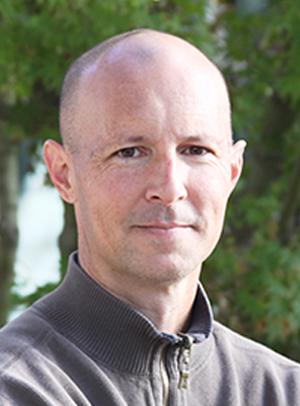
Rob Falgout
Fellow, Society for Industrial and Applied Mathematics
The Society for Industrial and Applied Mathematics (SIAM) selected Livermore computational mathematician Rob Falgout as an esteemed member of its 2021 Class of SIAM Fellows. The prestigious honor recognizes Falgout, a Distinguished Member of the Technical Staff in LLNL’s Center for Applied Scientific Computing, for his “contributions to the theory, practice and large-scale applications of multilevel solvers and for widely used parallel software,” as well as his outstanding service to the community, according to the organization. Falgout is best known in the field of mathematics for his development of multigrid methods and for hypre, one of the world’s most popular parallel multigrid codes.
“It’s an incredible honor to be named a SIAM fellow and to be listed alongside such remarkably talented people.”

Christopher Stolz
Fellow, SPIE, the International Society for Optics and Photonics
SPIE named Christopher Stoltz a fellow of the international society for optics and photonics in recognition of his technical achievement and his service to the general optics community. Stoltz, an associate program manager in charge of the National Ignition Facility (NIF) optics supply, has worked at LLNL in the laser directorate as a thin film engineer for more than 30 years; first in Atomic Vapor Laser Isotope Separation (AVLIS) and then NIF. Throughout his career, Stoltz has focused on understanding how micron scale and smaller defects limit the laser fluence in complex optical interference coating structures. Stolz helped pioneer the use of Ion Beam Sputtering (IBS) for high fluence pulsed-laser systems.
“I am very honored to be recognized by SPIE for not only my technical contributions to the laser program at LLNL, but also for my service to both SPIE and Optica (formerly OSA) conference leadership.”
Other Awards
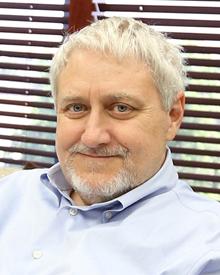
Secretary’s Exceptional Service Award, Department of Energy
Administrator’s Distinguished Service Gold Award, National Nuclear Security Administration
Former Lawrence Livermore National Laboratory director Bill Goldstein received honors from the Department of Energy and the National Nuclear Security Administration in recognition of his significant accomplishments as a scientist, leader in national security, and director of LLNL. In a virtual ceremony, then-acting Secretary of Energy David Huizenga conferred the Secretary’s Exceptional Service Award to Goldstein in recognition of his “dedication and service to the National Nuclear Security Administration, the Department of Energy, and the nation.”

Lifetime Distinguished Achievement Award, Department of Energy’s Vehicle Technologies Office
Livermore engineer William Pitz has earned a lifetime distinguished achievement award from the Department of Energy’s Vehicle Technologies Office for his significant contributions to the field of chemical kinetics. Pitz, along with retiree Charles Westbrook, produced a chemical kinetic study of fuel additives for engine knock in spark ignition engines, a feat that earned them the 1991 Horning Award from the Society of Automotive Engineers. Their area of research is the development of chemical kinetic mechanisms for conventional fuels like gasoline and diesel fuel, and also for next-generation fuels, such as new types of biofuels being considered as potential replacements for fossil fuels.
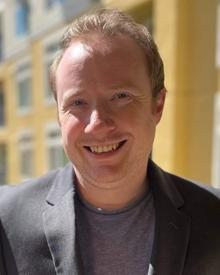
Mark Mills Award, American Nuclear Society
Dylan Hoagland was honored with the 2021 American Nuclear Society (ANS) Mark Mills award. The Mark Mills Award is conferred by the Education, Training and Workforce Division of the ANS and is presented every year to the graduate student author or authors who submit the best original technical paper contributing to the advancement of science and engineering related to the atomic nucleus.
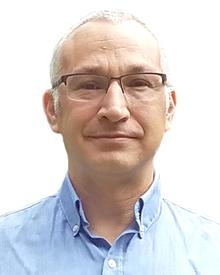
Edward Teller Award, American Nuclear Society
Omar Hurricane, chief scientist for Livermore’s inertial confinement fusion (ICF) program, is a recipient of the 2021 Edward Teller Award. The Fusion Energy Division of the American Nuclear Society (ANS) presented the award to Hurricane for his “visionary scientific insights and leadership of National Ignition Facility (NIF) experiments resulting in the achievement of fuel gain, an alpha-heating-dominated plasma, and a burning plasma.” Hurricane was elected a fellow of the American Physical Society in 2016 in recognition of these contributions to ICF leading to the first laboratory demonstration of an alpha-heating dominated plasma. Established in 1991, the Edward Teller Award recognizes pioneering research and leadership in the use of lasers, ion-particle beams, or other high-intensity drivers to produce unique high-density matter for scientific research and to conduct investigations of inertial fusion. The medal is named in honor of the late distinguished physicist, LLNL director emeritus.
DOE Office of Science Early Career Research Program Award
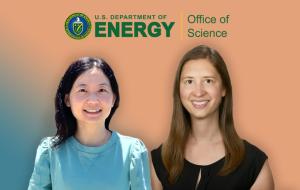
Two LLNL scientists were among 83 individuals nationwide selected for the 2021 Department of Energy’s (DOE) Office of Science Early Career Research Program award. The Early Career Research Program bolsters the nation’s scientific workforce by providing support to exceptional researchers during crucial early career years, when many scientists do their most formative work. Under the program, typical awards for DOE national laboratory staff are $500,000 per year for five years.
“Maintaining our nation’s brain trust of world-class scientists and researchers is one of DOE’s top priorities—and that means we need to give them the resources they need to succeed early on in their careers,” Secretary of Energy Jennifer M. Granholm said. “These awardees show exceptional potential to help us tackle America’s toughest challenges and secure our economic competitiveness for decades to come.”
Andrea Schmidt, a physicist in the National Security Engineering Division in the Engineering Directorate, was nominated in the High Energy Density Physics category for her work in magnetically driven Z-pinch plasmas. These plasmas can be used to study fundamental plasma physics and to produce radiation of various types for different applications.
“It is an incredible honor to be chosen for this award,” Schmidt said. “It will allow me to spend more time on discovery science over the next few years, and fund activities that are very complementary to my program work.”
Schmidt joined the Lab as a postdoctoral researcher in 2011 and recently hit her 10-year mark as a staff scientist. She plans to use the DOE funding to make fundamental measurements of current flow in a dense plasma focus Z-pinch that “will help us understand and improve the device.” She intends to carry out the work alongside postdocs and other staff members.
Xue Zheng, a research scientist in the Atmospheric, Earth, and Energy Division in the Physical and Life Sciences Directorate, was nominated in the Office of Biological and Environmental Research category for her work in aerosol-cloud processes in which she analyzes atmospheric observations and climate models to advance the understanding of cloud response to aerosols over ocean and land.
“I feel earnestly grateful to win the award,” Zheng said. “I’ve been inspired by previous award winners’ research in my area since I started my postdoc in the Lab. It is a tremendous honor for me to receive this award.”
Aerosol particles in the atmosphere can affect the Earth’s climate directly by scattering or absorbing radiation or indirectly by changing the properties of clouds (such as cloud particle size or cloud lifetime). This “aerosol indirect effect” on liquid-phase clouds remains highly uncertain in present and future climate scenarios. Zheng’s project uses DOE’s long-term Atmospheric Radiation Measurement (ARM) observations, complemented by satellite retrievals and numerical simulations, to study the aerosol indirect effect on liquid-phase clouds.
Zheng joined the Laboratory in 2014 as a postdoctoral researcher. Her research area focuses on cloud parameterizations in climate models with her primary interest in boundary layer cloud processes and aerosol-cloud interactions. The additional funding will allow her to implement advanced statistical techniques to better detect the aerosol–cloud interactions in DOE ARM observations and DOE Energy Exascale Earth System Model (E3SM).
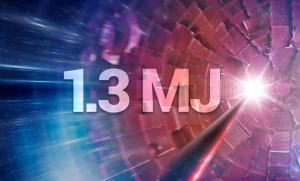
Credit: John Jett
NIF experiment puts researchers at the threshold of fusion ignition
The National Ignition Facility (NIF), located at LLNL, is the world’s largest and highest-energy laser. NIF’s 192 powerful laser beams, housed in a 10-story building the size of 3 football fields, can deliver more than 2 million joules of ultraviolet laser energy in billionth-of-a-second pulses onto a target about the size of a pencil eraser.
NIF enables scientists to create extreme states of matter, including temperatures of 100 million degrees and pressures that exceed 100 billion times Earth’s atmosphere. Experiments conducted on NIF make significant contributions to national and global security, could help pave the way to practical fusion energy, and further the nation’s leadership in basic science and technology and economic competitiveness. Ignition experiments at NIF are advancing the science toward the eventual use of fusion as a safe, clean, and virtually unlimited energy source.

A Milestone in Laser Fusion
On Aug. 8, 2021, an experiment at NIF made a significant step toward ignition, achieving a yield of more than 1.3 megajoules (MJ). This advancement puts researchers at the threshold of fusion ignition, an important goal of the NIF, and opens access to a new experimental regime. The experiment was enabled by focusing laser light from NIF onto a target that produces a hot-spot the diameter of a human hair, generating more than 10 quadrillion watts of fusion power for 100 trillionths of a second.
“These extraordinary results from NIF advance the science that NNSA depends on to modernize our nuclear weapons and production as well as open new avenues of research,” said Jill Hruby, DOE under secretary for Nuclear Security and NNSA administrator.
The central mission of NIF is to provide experimental insight and data for NNSA’s science-based Stockpile Stewardship Program. Experiments in pursuit of fusion ignition are an important part of this effort. They provide data in an important experimental regime that is extremely difficult to access, furthering our understanding of the fundamental processes of fusion ignition and burn and enhancing our simulation tools to support stockpile stewardship. Fusion ignition is also an important gateway to enable access to high fusion
yields in the future.
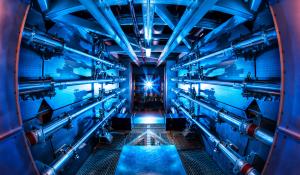
“This result is a historic step forward for inertial confinement fusion research, opening a fundamentally new regime for exploration and the advancement of our critical national security missions. It is also a testament to the innovation, ingenuity, commitment, and grit of this team and the many researchers in this field over the decades who have steadfastly pursued this goal,” said LLNL Director Kim Budil. “For me it demonstrates one of the most important roles of the national labs—our relentless commitment to tackling the biggest and most important scientific grand challenges and finding solutions where others might be dissuaded by the obstacles.”
Collaboration, Dedication, Appreciation
The experiment built on several advances gained from insights developed over the last several years by the NIF team including new diagnostics; target fabrication improvements
in the hohlraum, capsule shell and fill tube; improved laser precision; and design changes
to increase the energy coupled to the implosion and the compression of the implosion.
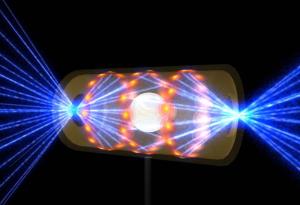
Many of those insights and innovations were transformed into solutions through funding provided by LDRD programs at NNSA laboratories. LDRD investments in this foundational work over the last two decades spanned key science and technology areas, including target fabrication, diagnostic tools, and laser-plasma interactions.
One key area of innovation involves a broad range of LDRD-funded work related to the design and fabrication of the targets used in NIF experiments. NIF targets consist of fuel capsules suspended inside hollow metal cylinders called hohlraums. Since target design plays a major role in the success of fusion experiments, the targets are fabricated to meet precise specifications for each experiment, including the capsule’s material composition, density profiles, spherical shape, and surface finish.
Over the last decade, LDRD-funded work related to target design and fabrication included a focus on developing novel materials and nanoscale fabrication techniques to assemble structures measuring less than 100 nanometers and being able to manipulate the material to carefully control the thickness of the target’s layers. For example, an LDRD project at LLNL made it possible to fabricate high-density carbon material with unprecedented precision for use as the fuel capsule’s shell, known as the ablator. These innovative techniques were used for the target fabrication in the high-yield NIF experiment on Aug. 8, 2021.
LDRD-funded research teams continue to explore other innovative target designs. Their work includes development of novel hohlraum shapes, advanced ignition target designs, and capsule designs optimized for symmetric implosions with higher capsule-absorbed energy. These projects lay the groundwork for future NNSA pathways to even higher neutron yields. Additionally, LDRD-funded research allowed scientists and engineers across the country to capture images of the Aug. 8 NIF experiment through their work on integrated circuits, imaging technology, microelectronics, and radiation.
“This significant advance was only made possible by the sustained support, dedication and hard work of a very large team over many decades, including those who have supported the effort at LLNL, industry, and academic partners and our collaborators at Los Alamos National Laboratory and Sandia National Laboratories, the University of Rochester’s Laboratory for Laser Energetics and General Atomics,” said Mark Herrmann, LLNL’s deputy program director for Fundamental Weapons Physics. “This result builds on the work and successes of the entire team, including the people who pursued inertial confinement fusion from the earliest days of our Laboratory. They should also share in the excitement of this success.”
Looking ahead, access to this new experimental regime will inspire new avenues for research and provide the opportunity to benchmark modeling used to understand the proximity to ignition. Plans for repeat experiments are well underway as researchers take additional shots at producing more fusion energy than the laser energy needed to start the reaction. In the coming months, LLNL scientists will use precisely manufactured equipment to closely observe the hydrodynamics of the implosion and take further steps towards ignition.
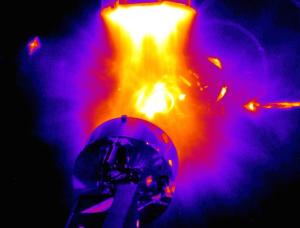
NIF Timeline
| May 1997 | NIF groundbreaking ceremony |
| June 1999 | Target Chamber installed |
| October 2001 | First laser light created |
| May 2003 | NIF produces 10.4 kJ of ultraviolet light in a single laser beam, setting a world record for laser performance |
| March 2009 | Formal certification of NIF Project completion by the National Nuclear Security Administration |
| Summer 2009 | 192-beam experimental shots to Target Chamber center begin |
| July 2012 | More than 1.8 MJ of ultraviolet energy and 500 trillion watts of peak power delivered to Target Chamber center |
| September 2013 | NIF implosion yields more energy than the energy absorbed by the fuel, a key step on the path to ignition |
| January 2014 | NIF experiment produces 27 kJ of fusion energy; more than half of the yield is attributed to alpha heating A |
| August 2017 | An experiment produces 54 kJ of energy, the highest yield to date |
| May 2018 | The NIF lasers set a new energy record, firing 2.15 MJ of energy into the Target Chamber |
| August 2021 | An experiment achieved a 1.35 MJ of fusion energy output, more than 25 times the record yield set in 2018, advancing NIF to the threshold of ignition |








